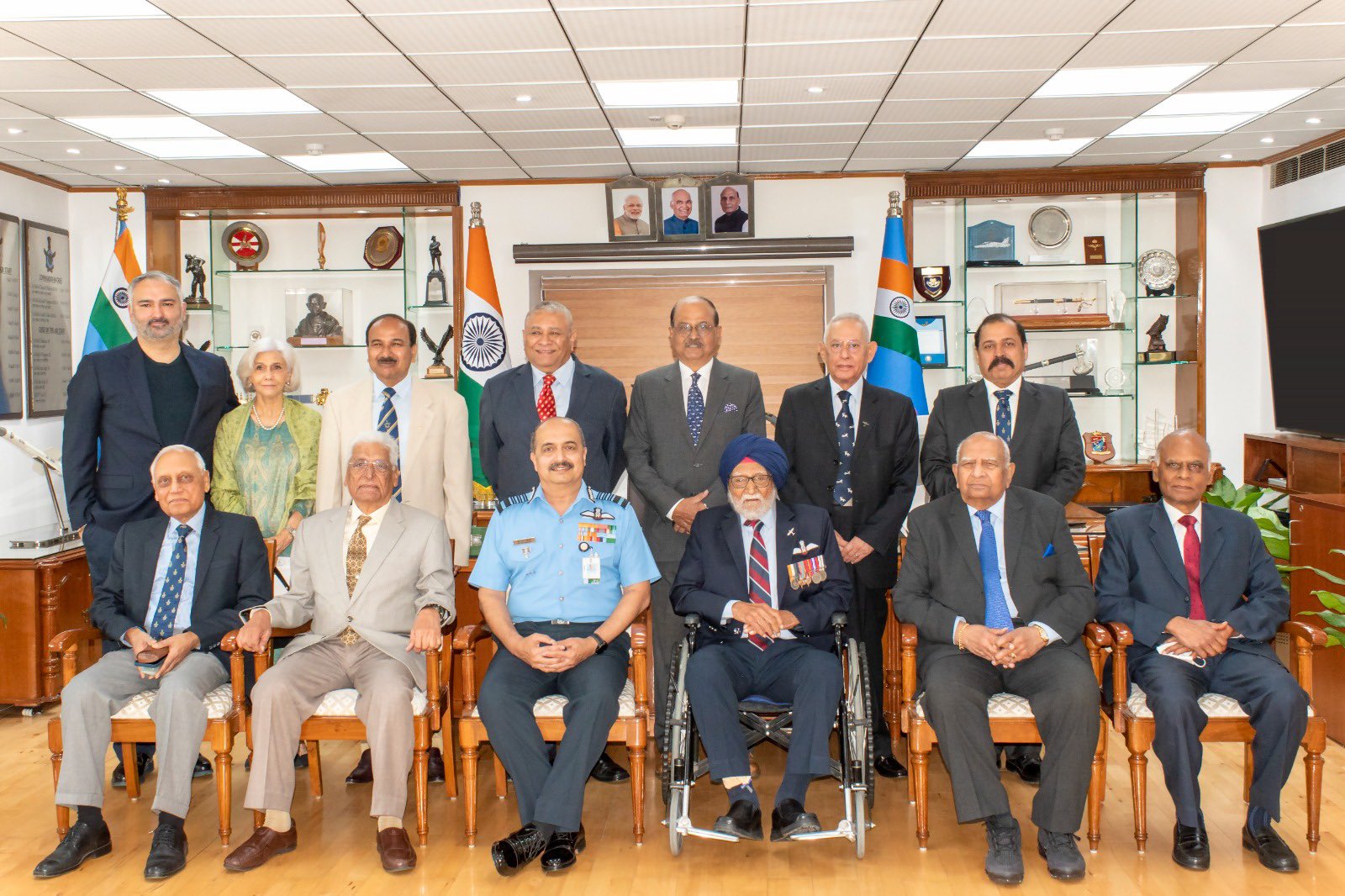The IAF History Thread
Re: The IAF History Thread
THE MIG-21 IN THE IAF: SIX DECADES OF UTILISATION
https://www.thedefencematrix.in/mig-21i ... of-service
18 Aug 2022
By Group Captain Noel Amiyakumar Moitra, VM (Retd.)
https://www.thedefencematrix.in/mig-21i ... of-service
18 Aug 2022
By Group Captain Noel Amiyakumar Moitra, VM (Retd.)
Re: The IAF History Thread
Rakesh, Going back to 1971 IAF attacked East Pakistan runaways with rockets.
And found them ineffective.
Then had to send Mig-21s that gave direct hits with 500 lb bombs.
No one tells what make are those bombs. FSU? Then they would be 250 kg, not 500 lb.
Quite loose with facts.
How was the rocket attack on the concrete runways decision made?
At the local level?
And found them ineffective.
Then had to send Mig-21s that gave direct hits with 500 lb bombs.
No one tells what make are those bombs. FSU? Then they would be 250 kg, not 500 lb.
Quite loose with facts.
How was the rocket attack on the concrete runways decision made?
At the local level?
Re: The IAF History Thread
Sir the IAF first tried hitting Aircraft pens and Aircraft on the ground with Rockets and strafing with Hunters and Su-7B for the 1st 2 days which was not that successful- they lost a few aircraft to defending Sabers, then they changed strategy. Where Mig 21's from Assam came at High Altitude, then dropped bombs in shallow dive hitting the Runways 1 or 2 times a day, by 8 Dec 1971 Pakistan was trying evacuate the Pilots to West Pakistan through Myanmar as the IAF runway bombing was so accurate the PAF decided that abandon air operations in East Pakistan.ramana wrote:Rakesh, Going back to 1971 IAF attacked East Pakistan runaways with rockets.
And found them ineffective.
Then had to send Mig-21s that gave direct hits with 500 lb bombs.
No one tells what make are those bombs. FSU? Then they would be 250 kg, not 500 lb.
Quite loose with facts.
How was the rocket attack on the concrete runways decision made?
At the local level?
The IAF stated they were normal Bombs after the war.
Re: The IAF History Thread
https://twitter.com/AnchitGupta9/status ... 66944?s=20 ---> First IAF Mirage-2000 in France on 30 May 1983. Pictures from the personal collection of Air Marshal Tirlochan Singh who was the Air Attache at Paris then.
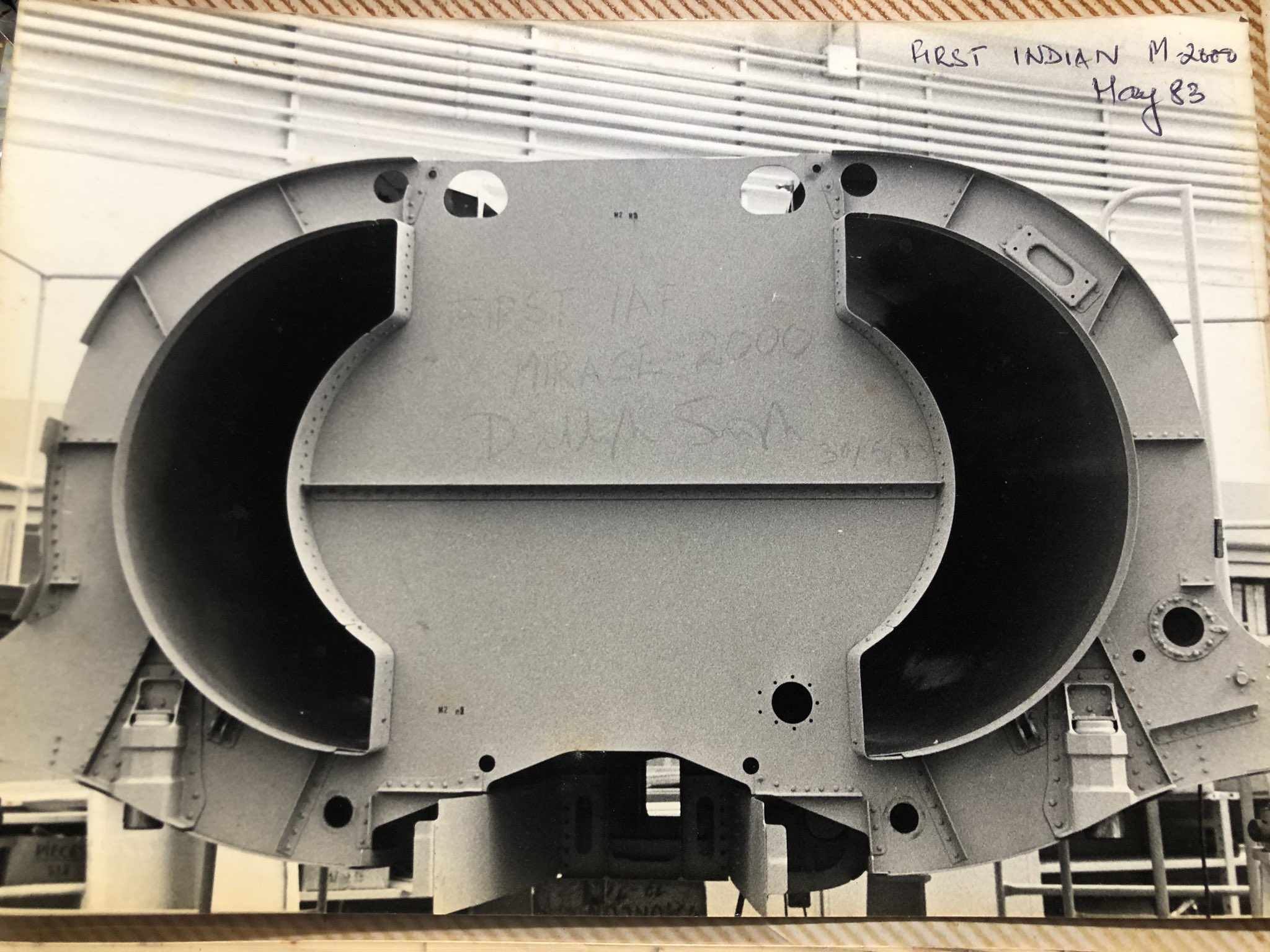
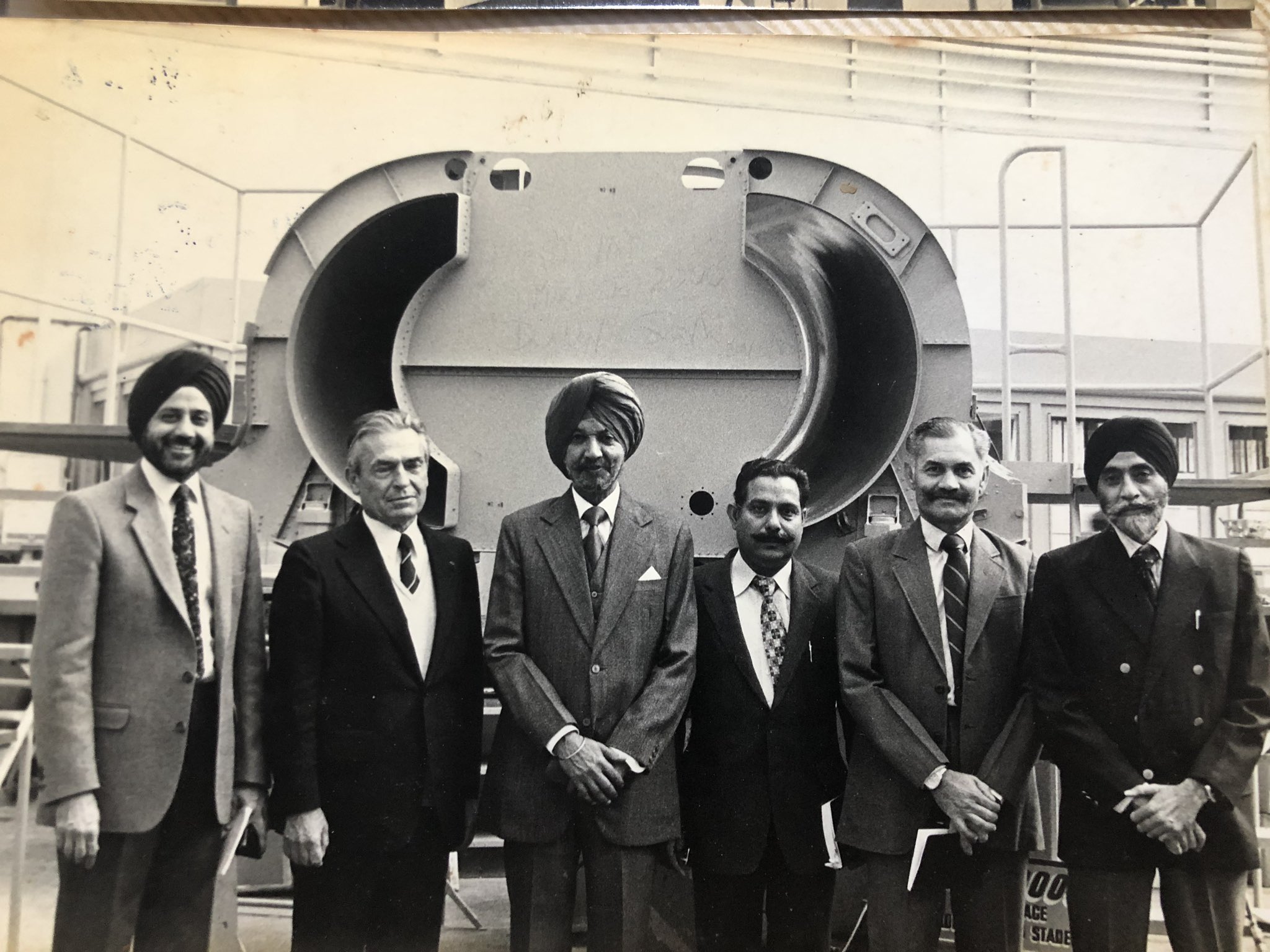


Re: The IAF History Thread
https://x.com/AnchitGupta9/status/17191 ... 54441?s=20 ---> Seems like No 4 Sqn, IAF has converted to Su-30. Two historical aspects :
1. No 3 Sqn (Oct 41), followed by No 4 Sqn (Feb 42), has the longest record of unbroken service. If No 3 Sqn numberplates (due to the phase-out of MiG-21), No 4 Sqn will claim this record.
2. Uttarlai has had No 4 Sqn and MiG-21s since ~1987. For Uttarlai, an FBSU close to the border, the MiG-21 was ideal for the ORP role. In fact, No 4 Sqn was the first squadron to be based full-time out of Uttarlai. Their 36-year relationship yielded epic tales - that love story ends.
Who could have foreseen that a splendid mountain sheep from the Kala Chitta Mountain ranges would become the mascot for potentially the longest-serving IAF squadron in the 21st century?
More here: https://iafhistory.in/2022/09/11/woolly ... adron-iaf/
1. No 3 Sqn (Oct 41), followed by No 4 Sqn (Feb 42), has the longest record of unbroken service. If No 3 Sqn numberplates (due to the phase-out of MiG-21), No 4 Sqn will claim this record.
2. Uttarlai has had No 4 Sqn and MiG-21s since ~1987. For Uttarlai, an FBSU close to the border, the MiG-21 was ideal for the ORP role. In fact, No 4 Sqn was the first squadron to be based full-time out of Uttarlai. Their 36-year relationship yielded epic tales - that love story ends.
Who could have foreseen that a splendid mountain sheep from the Kala Chitta Mountain ranges would become the mascot for potentially the longest-serving IAF squadron in the 21st century?
More here: https://iafhistory.in/2022/09/11/woolly ... adron-iaf/
Re: The IAF History Thread
https://x.com/SauravChordia1/status/171 ... 57195?s=20 ---> True to their word, "Never missed a good Fight since 1942."


Re: The IAF History Thread
https://x.com/Chopsyturvey/status/17218 ... 70201?s=20 ---> In Gwalior to attend the Tiger Squadron 90th "Granite" anniversary.
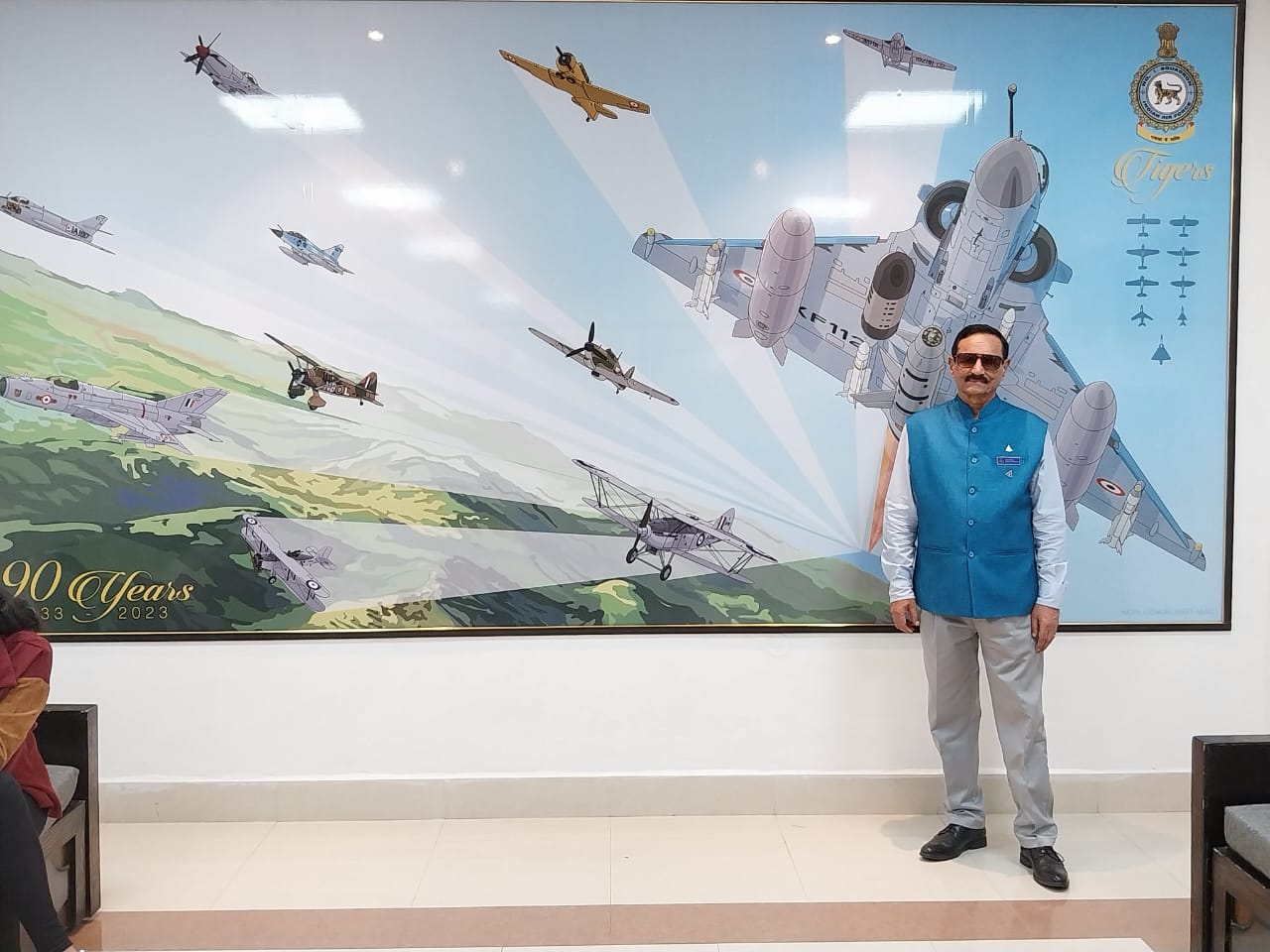

Re: The IAF History Thread
https://iafhistory.in/2024/01/06/who-wa ... n-cie-ics/
Who was Mr WHJ Wilkinson CIE, ICS?
Mr. WHJ Wilkinson, CIE, ICS. This name, consistently appeared on entry forms for IAF Cadets trained at Cranwell. This post is a search for this mysterious man.
Anchit Gupta
While delving into the early records of Indian Air Force Cranwell graduates, a name repeatedly surfaced, sparking my curiosity: Mr. WHJ Wilkinson, CIE, ICS. This name, consistently appearing on entry forms for IAF Cadets trained at Cranwell, beckoned a deeper exploration.
This pursuit unveiled the fascinating life story of Walter Hugh John Wilkinson, a narrative that, while not directly linked to IAF History, is compelling enough to warrant attention. Born in 1874, Wilkinson’s journey to India began after his education at Oxford. At career in the Indian Civil Service (ICS) as a Political Officer, setting foot on Indian soil on November 29, 1897.
Wilkinson’s initial five years in India were marked by a series of diverse roles in Bombay, laying the foundation for a life steeped in India’s history of that era. Wilkinson’s journey in India took a turn when he was appointed as the assistant to the Resident at Hyderabad, marking the beginning of his deep and enduring engagement with Indian royalty. His career path then led him to the princely state of Kishengarh, where he served as the tutor to the Maharaja. This period of his life was further enriched when he tied the knot in Nasirabad on the eve of Christmas in 1906.
The life journey continued to weave fascinating patterns as he moved to Ajmer. Here, he not only took on the significant role of officiating as the Principal of Mayo College but also became the tutor and guardian to the second surviving son of the Gaekwad of Baroda, one of the prominent royal families of the time. His stature and reputation in royal circles were further underscored in 1911 when he accompanied the Maharaja of Patiala to the coronation, a testament to his influential position and deep integration into the Indian royal milieu.
As the world edged closer to the brink of the Great War, Wilkinson found himself in various influential roles in Rajputana. With the outbreak of the conflict, he transitioned to a military role, joining the Secunderabad Headquarters Cavalry Division. A rise to the rank of Captain marked his service in France from September 1914 to December 1918.
Wilkinson’s military tenure was marked by distinguished recognition. He was mentioned in dispatches no fewer than four times, a testament to his exemplary service. His courage and dedication were further acknowledged through the award of prestigious international honours: he was conferred with the Chevalier of the Order of Leopold I of Belgium and the Chevalier of the Légion d’Honneur.
In 1919, at 45, Wilkinson’s contributions were celebrated with a significant imperial accolade — he was appointed a Companion of the Indian Empire. Upon returning to India, Wilkinson’s career took a more diplomatic trajectory. He served with distinction in the Residencies of Mysore, Baroda, Mewar, Kotah, and Jhalawar. His diplomatic journey reached a pinnacle in 1924 when he was appointed the British Envoy to Nepal, representing British interests at the court of Lieutenant General Sir Kaiser Shumshere Jung Bahadur Rana, KBE.
Wilkinson was involved in a unique diplomatic episode during his tenure in Nepal. Upon being conferred the KBE, the Rana commissioned Garrard and Company Ltd, the esteemed Goldsmiths to the Crown, to craft a KBE star. However, not just any star would suffice — he requested it to be enlarged to the dimensions of a KCB star, a request that indicated his desire for grandeur and prestige. The star’s fate was to be determined by its appearance, with the possibility of being recreated in diamonds if it met Rana’s expectations for significance and importance.
Wilkinson’s influence and esteem within the Nepalese court were unmistakably evident when, at his recommendation, the specially commissioned KBE star was returned. His tenure in Nepal solidified his reputation as a respected and beloved figure in the court, a status he maintained until his retirement in 1929 at 55. After spending 32 enriching years in India, Wilkinson returned to England, choosing the quaint town of Ascot as his place of residence.
Yet, even in England, Wilkinson’s connection to India frequently resurfaced. Initially, he was considered for a unique role involving the ‘Kabul Union’, a group of students from the North-West Frontier Province and Afghanistan, some of whom had been exposed to revolutionary ideologies in Tashkent. His task was to engage these students subduedly, hosting small gatherings with tea and arranging visits to Wimbledon and rugby matches. However, this assignment was eventually set aside, and Wilkinson was offered a more significant role as the Local Guardian to Indian students at Sandhurst.
This new role was a perfect fit for Wilkinson, given his extensive experience and understanding of Indian culture, honed through years of interacting with Indian royalty and officials. He was a natural successor to Col. Stokes, who had faced criticism from the Skeene Committee for his aloof and brusque manner, particularly for his restrictions on Indian students interacting with white women. Wilkinson’s diplomatic skills and familiarity with Indian customs made him an ideal candidate to bridge cultural divides and provide a supportive environment for the Indian students at Sandhurst.
Col. Stokes, whom Jinnah had criticised as “hysterical, unsuitable, and incompetent,” passed on his responsibilities to Wilkinson in January 1930. Wilkinson’s role encompassed not just administrative duties but also the personal welfare of the cadets. He was tasked with disbursing a monthly allowance of four shillings to each cadet and addressing their concerns, a role that required a blend of bureaucratic efficiency and empathetic understanding.
In his memoirs, Awan paints a vivid picture of Wilkinson, describing him as the epitome of an English gentleman, donning a black lounge suit and bowler hat, often seen with an umbrella in hand. This image symbolises the era and speaks volumes about Wilkinson’s persona. Awan also fondly recalls the hospitable environment at Wilkinson’s Ascot residence, where the cadets were often invited. The grandeur of his home, complete with a beautifully manicured lawn and a tennis court, provided a serene and welcoming space for the cadets, far from their homeland.
In 1934, Wilkinson’s life took a turn when he adopted the additional surname of Guillemard, a decision influenced by inheriting a relative’s property. His life, spanning 64 years and rich with rare experiences, is marked by his interactions with royalty and his significant contributions in various capacities. He passed away in 1939, leaving a legacy of service and diplomacy, having spent much of his life amidst the splendour and majesty of royal courts.
At the time of Wilkinson’s passing, the Indian Air Force was in its nascent stage, having been established only seven years prior. The IAF was beginning to prove its mettle in operations across the North-West Frontier Province, an area already steeped in a rich history of military engagement. Regrettably, Wilkinson did not live to witness the brave acts his former wards would perform in the skies over Burma during the Second World War, a theatre of conflict reminiscent of his experiences in France. One can imagine that he would have swelled with pride at their gallantry and the crucial roles they played in shaping the IAF.
Reflecting on Wilkinson’s life story, it becomes evident that he played a subtle yet influential role in the early development of the IAF. His interactions with the Indian cadets, understanding of their culture and aspirations, and guidance during their formative years in military training were integral to their growth. More than just a figure in the background, Wilkinson’s life provides valuable context to a historical era. It offers a glimpse into a time when young men from the Indian subcontinent travelled across seas to master the art of aviation, laying the foundations for what would become a prestigious and formidable air force. His story, therefore, is not just about his journey but also a testament to the enduring impact of mentorship and cultural exchange in the annals of military history.
Despite my best efforts, I could not find a picture to place the man.
My co-author on this chooses to remain anonymous.
Re: The IAF History Thread
HISTORY OF THE MARUT.. Recommended Watch..supercruise in 1950 !
Re: The IAF History Thread
Wow - Although I knew the story, watching it again is amazing, inspiring and depressing at the same time. We were and are always short sighted.
Re: The IAF History Thread
https://x.com/singhshwetabh71/status/17 ... 06330?s=20 ---> Three MiG-23BN of the IAF in formation, pretty cool picture.
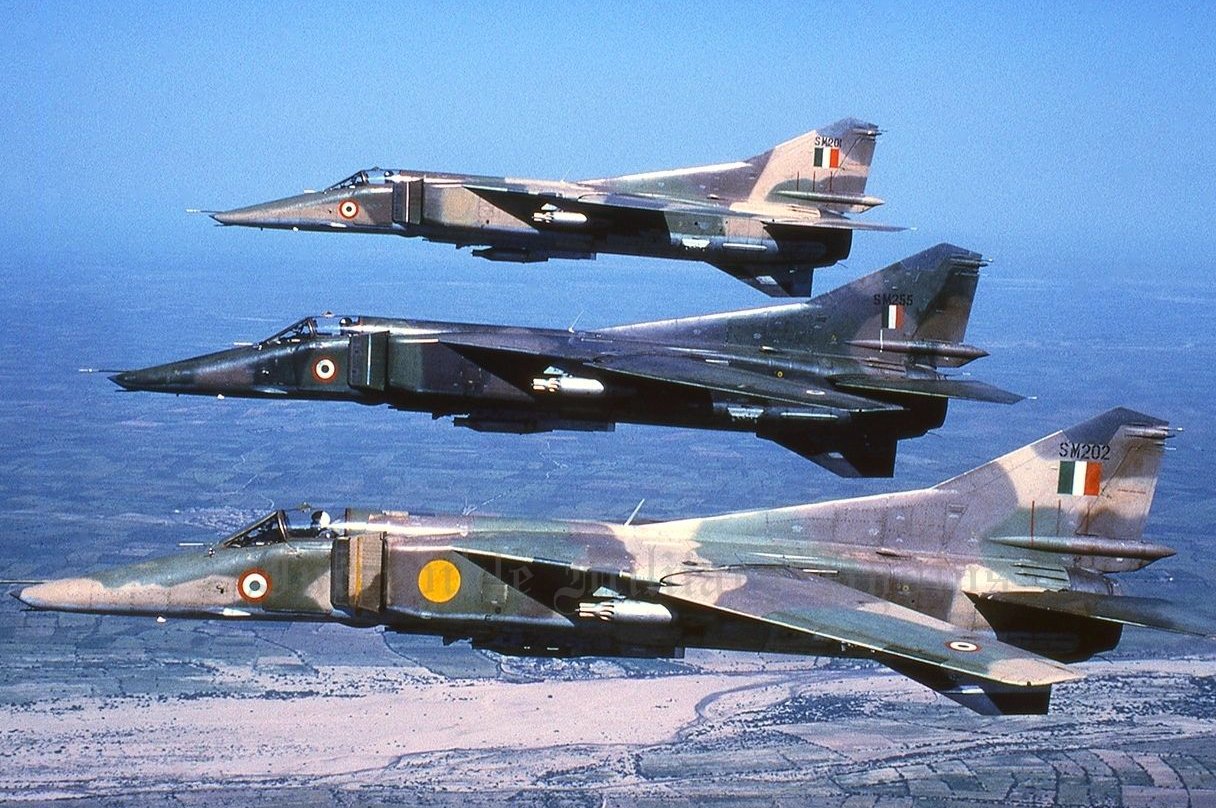

Re: The IAF History Thread
https://x.com/AnchitGupta9/status/17639 ... 11459?s=20 ---> Jamangar Air Force station is in news these days. Jamnagar holds a very important place in the IAF. A topic worthy of a longer thread, but a few milestones are mentioned here. A short thread (1/13).
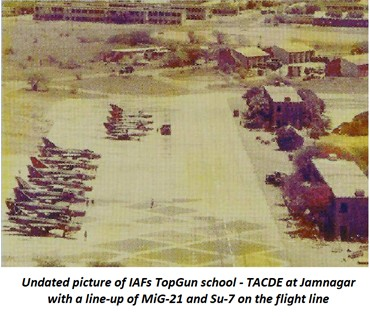

Re: The IAF History Thread
https://x.com/VishnuNDTV/status/1780122028269539394 ---> Squadron Leader Dalip Singh Majithia, the IAF's oldest pilot passes away at the age of 103. A wonderful man, a brilliant aviator who leaves behind an awesome legacy. Had written this piece and interviewed him when he scored his century:Rakesh wrote: ↑27 Jul 2020 21:41 He has truly touched the sky with Glory! Jai Hind Sir!
https://twitter.com/ShivAroor/status/12 ... 64865?s=20 ---> India’s oldest fighter pilot Squadron Leader Dalip Singh Majithia, turns 100 today! He retired from the Indian Air Force in August 1947, just as India was gaining independence. The things he must have seen. Power to you always, Sir!
The Storied Career Of India's Oldest Fighter Pilot Who Turns 100 Tomorrow
https://www.ndtv.com/india-news/the-sto ... ow-2268918
26 July 2020
Re: The IAF History Thread
^^^ https://x.com/narendramodi/status/1780283985580474774 ---> Squadron Leader Dalip Singh Majithia Ji’s exemplary career and valour exemplify the highest ideals of service and dedication to our country. His passing away is a profound loss to the Indian Air Force. His contribution will forever be a source of inspiration. Condolences to his family and admirers. May his soul rest in peace.
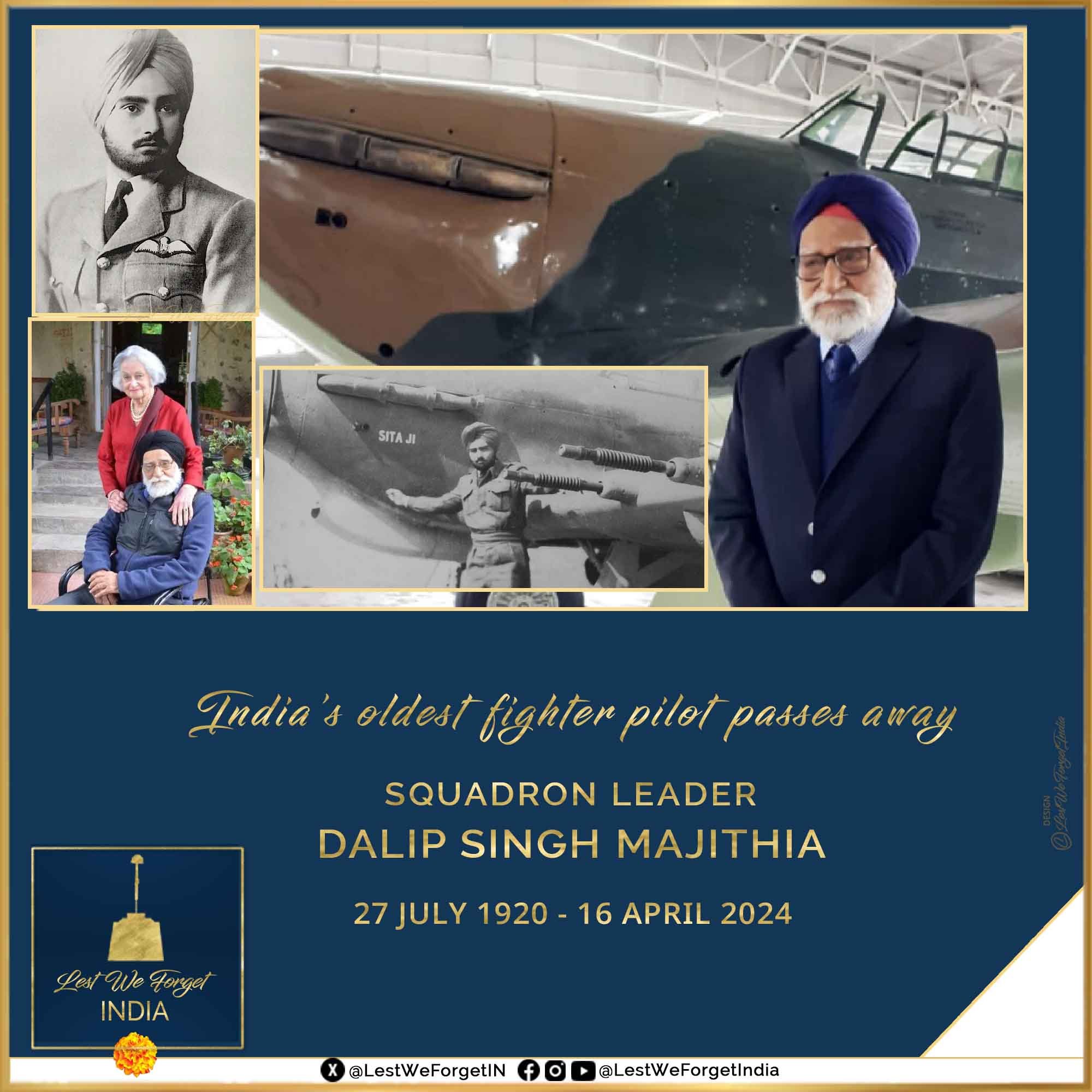

Re: The IAF History Thread
https://x.com/AnchitGupta9/status/1780076621392908546 ---> In a grand gesture - the past and current Chief of Air Staff of the IAF assembled for a picture with late Sqn Ldr Majithia sometime back.
